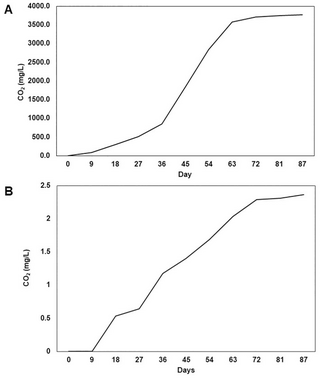Fungi that break down hardwood trees can do the same with plastic, new study shows.
The involvement of microorganisms in low-density polyethylene (LDPE) degradation is widely studied across the globe. Even though soil, landfills, and garbage dumps are reported to be promising niches for such organisms, recently the involvement of wood decay fungi in polyethylene degradation is highlighted. In light of this, 50 fungal samples isolated from decaying hardwoods were assessed for their wood degradation ability and for their depolymerization enzymatic activities. For the LDPE deterioration assay, 22 fungal isolates having wood decay ability and de-polymerization enzymatic activities were selected. Fungal cultures with LDPE sheets (2 cm x 10 cm x 37.5 μm) were incubated in the presence and in the absence of wood as the carbon source © for 45 days. Degradation was measured by weight loss, changes in tensile properties, reduction in contact angle, changes of functional groups in Fourier-transform infrared spectroscopy, Scanning electron microscopic imaging, and CO2 evolution by strum test. Among the isolates incubated in the absence of wood, Phlebiopsis flavidoalba out-performed the other fungal species showing the highest percentage of weight reduction (23.68 ± 0.34%), and the lowest contact angle (64.28° ± 5.01). Biodegradation of LDPE by P. flavidoalba was further supported by 46.79 ± 0.67% of the mass loss, and 3.07 ± 0.13% of CO2 emission (mg/L) in the strum test. The most striking feature of the experiment was that all the isolates showed elevated degradation of LDPE in the absence of wood than that in the presence of wood. It is clear that in the absence of a preferred C source, wood decay fungi thrive to utilize any available C source (LDPE in this case) showing the metabolic adaptability of fungi to survive under stressful conditions. A potential mechanism for LDPE degradation is also proposed.
